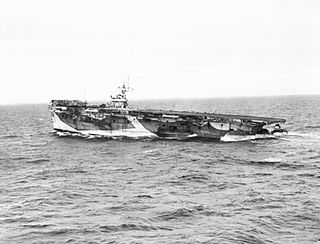
HMS Nabob (D77) was a Ruler-class escort aircraft carrier which served in the Royal Navy during 1943 and 1944. The ship was built in the United States as the Bogue-classUSS Edisto (CVE-41) but did not serve with the United States Navy. In August 1944 the ship was torpedoed by the German submarine U-354 while participating in an attack on the German battleship Tirpitz. Nabob survived the attack, but upon returning to port, was considered too damaged to repair. The escort carrier remained in port for the rest of the war and was returned to the United States following it. Nabob is one of two Royal Navy escort carriers built in the United States which is listed as lost in action during World War II. The ship was sold for scrap by the United States but found a second life when purchased and converted for mercantile use under her British name, Nabob. Later renamed Glory, the ship was sold for scrapping in 1977.

The V and W class was an amalgam of six similar classes of destroyer built for the Royal Navy under the 9th, 10th, 13th and 14th of fourteen War Emergency Programmes during the First World War and generally treated as one class. For their time they were among the most powerful and advanced ships of their type in the world, and set the trend for future British designs.

The Hunt class was a class of escort destroyer of the Royal Navy. The first vessels were ordered early in 1939, and the class saw extensive service in the Second World War, particularly on the British east coast and Mediterranean convoys. They were named after British fox hunts. The modern Hunt-class GRP hulled mine countermeasure vessels maintain the Hunt names lineage in the Royal Navy.

HMS Ambuscade was a British Royal Navy destroyer which served in the Second World War. She and her Thornycroft competitor, HMS Amazon, were prototypes designed to exploit advances in construction and machinery since World War I and formed the basis of Royal Navy destroyer evolution up to the Tribal of 1936.

HMAS Kanimbla was a passenger ship converted for use as an armed merchant cruiser and landing ship infantry during World War II. Built during the mid-1930s as the passenger liner MV Kanimbla for McIlwraith, McEacharn & Co, the ship operated in Australian waters until 1939, when she was requisitioned for military service, converted into an armed merchant cruiser, and commissioned in the Royal Navy as HMS Kanimbla.
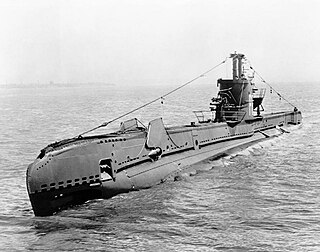
The S-class submarines of the Royal Navy were originally designed and built during the modernisation of the submarine force in the early 1930s to meet the need for smaller boats to patrol the restricted waters of the North Sea and the Mediterranean Sea, replacing the British H-class submarines. As part of the major naval construction for the Royal Navy during the Second World War, the S class became the single largest group of submarines ever built for the Royal Navy. A total of 62 were constructed over a period of 15 years, with fifty of the "improved" S class being launched between 1940 and 1945.
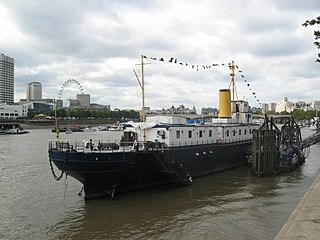
HMS President is a retired Flower-class Q-ship that was launched in 1918. She was renamed HMS President in 1922 and moored permanently on the Thames as a Royal Navy Reserve drill ship. In 1982 she was sold to private owners and, having changed hands twice, served as a venue for conferences and functions as well as the offices for a number of media companies. She has been moved to Chatham on the Medway in Kent since 2016, but is due to return to the capital. She had the suffix "(1918)" added to her name in order to distinguish her from HMS President, the Royal Naval Reserve base in St Katharine Docks. She is one of the last three surviving Royal Navy warships of the First World War. She is also the sole representative of the first type of purpose built anti-submarine vessels, and is the ancestor of World War II convoy escort sloops, which evolved into modern anti-submarine frigates.

HMS Swordfish was an experimental submarine built for the Royal Navy before the First World War to meet the Navy's goal of an "overseas" submarine capable of 20 knots on the surface. Diesel engines of the period were unreliable and not very powerful so steam turbines were proposed instead to meet the RN's requirement. Swordfish proved to be slower than designed and unstable while surfacing, and consequently she was modified as an anti-submarine patrol vessel in 1917. She was paid off before the end of the war and sold for scrapping in 1922.

HMS Tiptoe was a British submarine of the third group of the T class. She was built by Vickers Armstrong, Barrow, and launched on 25 February 1944. She was one of two submarines named by Winston Churchill, and so far has been the only ship of the Royal Navy to be named Tiptoe. In 1955 she was involved in a collision with a coastal steamer whilst in Tromsø harbour. She was involved in escape trials off Malta in 1962, and the commanding officer was reprimanded in 1964 following an incident in the Firth of Clyde where she was run aground, and again in 1965 when she collided with HMS Yarmouth. Although originally named for the ability to sneak up on someone undetected, she maintained several links with ballet, including the Royal Ballet and ballet dancer Moira Shearer. She was scrapped at Portsmouth in 1975, while her anchor is on display in Blyth, Northumberland.
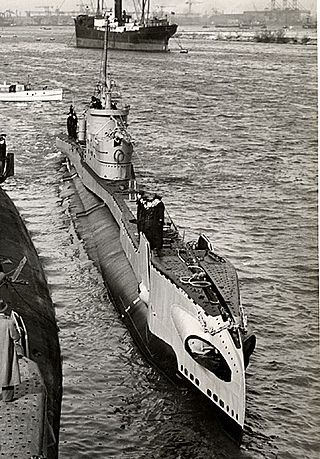
HMS Taurus was a Second World War T-class submarine, built by Vickers Armstrong, Barrow.
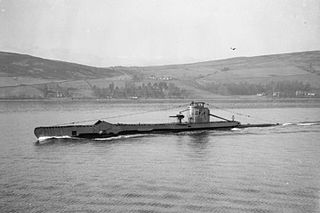
HMS Unison (P43) was a Royal Navy U-class submarine built by Vickers-Armstrong at Barrow-in-Furness, and part of the third group of that class. She is the only craft of the Royal Navy to have borne the name Unison. Prior to receiving the name, she carried the pennant number P43 and was unofficially known as Ulysses. She was renamed Unison in 1943.
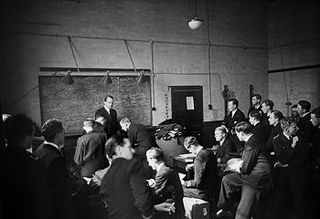
HMS Vernon was a shore establishment or "stone frigate" of the Royal Navy in Portsmouth. Vernon was established on 26 April 1876 as the Royal Navy's Torpedo Branch also known as the Torpedo School, named after the ship HMS Vernon which served as part of its floating base. After the First World War, HMS Vernon moved ashore, taking over the Gunwharf site, where it continued to operate until 1 April 1996, when the various elements comprising the establishment were split up and moved to different commands.

HMS Highlander was an H-class destroyer that had originally been ordered by the Brazilian Navy with the name Jaguaribe in the late 1930s, but was bought by the Royal Navy after the beginning of World War II in September 1939 and later renamed. When completed in March 1940, she was assigned to the 9th Destroyer Flotilla of the Home Fleet. The ship was assigned to convoy escort duties in June with the Western Approaches Command, sinking one German submarine in October. Highlander was transferred to Freetown, Sierra Leone, in mid-1941 to escort convoys off West Africa, but returned to the United Kingdom in August. She became flotilla leader of Escort Group B-4 of the Mid-Ocean Escort Force in early 1942 and continued to escort convoys in the North Atlantic for the rest of the war. The ship became a target ship after the war ended and was sold for scrap in mid-1946.
HMS Elfin has been the name of more than one British Royal Navy ship, and may refer to:
Four ships of the Royal Navy have borne the name HMS Nettle, after the stinging nettle, a species of flowering plants. A fifth was renamed before being launched.
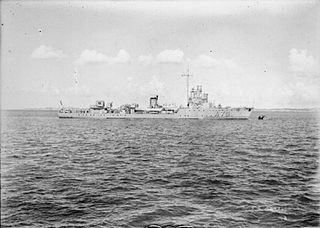
The Chamois class were French minesweeping sloops ordered between 1935 and 1939. They were similar in design to the Élan class, and like them classed as minesweepers, but were actually used as anti-submarine ships, convoy escorts and patrol vessels.

HMS Crispin was a C-class destroyer of the Royal Navy built by J. Samuel White, Cowes between 1944 and 1946. She was originally to have been named HMS Craccher. She was sold to the Pakistan Navy in 1958 and renamed PNS Jahangir. She was scrapped in 1982.
HMS Coreopsis was a Flower-class corvette, built for the Royal Navy during the Second World War which served in the Battle of the Atlantic. In 1943, she was transferred to the Royal Hellenic Navy as RHNS Kriezis and participated in the 1944 Invasion of Normandy. Shortly before she was scrapped, she took part in the British war film, The Cruel Sea.
HMS Redwing was a torpedo recovery vessel built for the Royal Navy. She was built by J. Samuel White & Company, East Cowes, Isle of Wight and was launched on 29 October 1933. She was builder's number 1753. She was the sister ship of HMS Elfin, yard nr 1754. She was a tender to the torpedo school HMS Defiance in Devonport.















